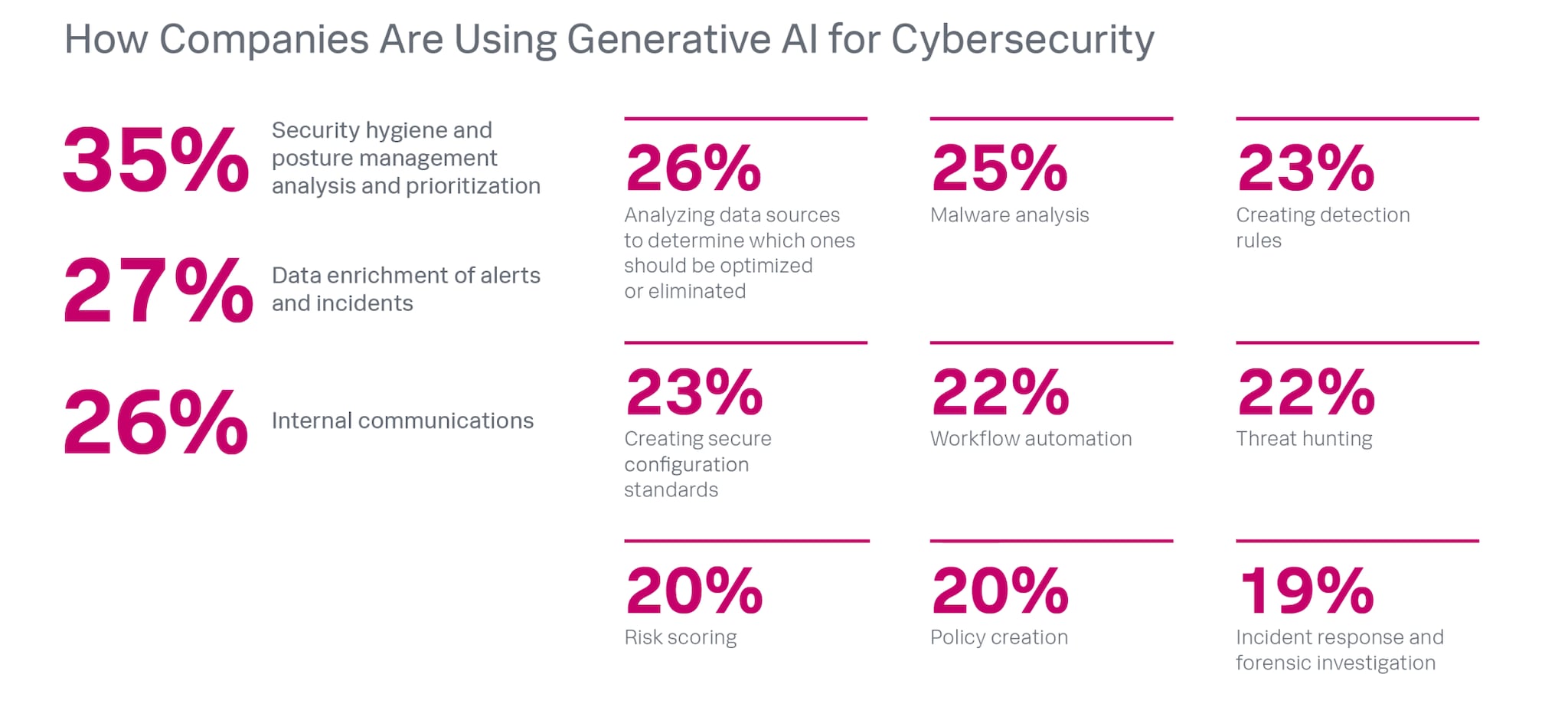But AI’s potential also stretches far beyond documentation creation and into the realm previously thought only accomplished by the human brain: quality assurance and prioritizing data sources (26%), malware analysis (25%), threat hunting (22%) and incident response and forensic investigations (19%). While the security problems are not new, with AI, the solutions could be.
AI also provides opportunities to elevate staff’s skill sets and education. Forty-six percent plan on getting security teams up to speed on effective prompt engineering. Policy efforts range from implementing security controls to mitigating AI risks (41%), training employees to better understand the threats posed by generative AI (39%) and establishing protocols to determine the types of tasks appropriate for AI bots (37%) as opposed to those that should be done exclusively by humans. Eighty-four percent of CISOs even say they plan to develop their own large language model (LLM) or other AI-based solutions for cybersecurity.
That said, many of these plans are either conceptual or in nascent stages, and teams still lack concrete implementation or deployment strategies. That will almost certainly change over the next year, however, as CISOs start reaping the benefits of AI and seeing new opportunities for development and expansion.
Building out, building better
“Will AI replace jobs?” is another million dollar question. The answer is “not entirely.” In fact, according to our CISO Report, 86% percent of CISOs believe that generative AI will alleviate existing skills gaps and talent shortages that they have on the security team. That means instead of replacing jobs, generative AI will more likely be used to fill in labor-intensive and time-consuming security functions that security professionals drag their feet doing anyway, freeing them up to be more strategic. In light of skills gaps and talent shortages, the reality is that there aren’t enough cybersecurity professionals to meet demands. AI gives organizations the ability to supplement staff with everything from documentation to basic ticket triage.
Instead of fearing AI might steal their jobs, many CISOs see it in the same way as they do automation — augmenting, rather than replacing, talent. When it comes to automation, 93% of CISOs say they have already either extensively or moderately implemented automation into their processes, giving them a lot of room for innovative use cases in the future.
While there are still many unknowns on the AI front, it’s safe to say that it will transform the roles of security professionals and cybercriminals alike. AI will assuredly give adversaries a new set of tools in their arsenal — and security teams will need to prepare accordingly. But CISOs also remain hopeful that it will give them a big leg up as well, allowing them to build out bigger and better cyber defenses, automate and accelerate processes, detect threats faster and eliminate them sooner.
And ultimately, help to beat the cybercriminals at their own game.
For more insight on how fellow cybersecurity leaders today are thinking about AI, ransomware, boardroom communication and more, read the full CISO Report.






